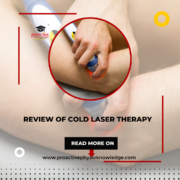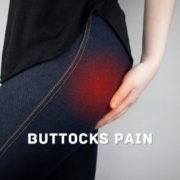The Science Behind TENS Machines – Do They Really Work?
Understanding the Effectiveness of TENS Units
When exploring the use of TENS (Transcutaneous Electrical Nerve Stimulation) units, people often ask, “How do TENS units work?” However, a more critical question is, “Do TENS machines actually work?”
The Evidence on TENS Units for Pain Relief
There is some evidence suggesting that TENS units can help alleviate pain, but the data supporting this is somewhat inconsistent. Superficial TENS, which involves placing electrodes on the skin to deliver electrical impulses, has been extensively studied. Numerous research studies have been conducted, leading to several reviews of these studies.
The Challenge of Conclusive Evidence
Despite the volume of research, many reviews have found the evidence to be inconclusive. The primary reason for this ambiguity is the quality of the data. In the field of musculoskeletal medicine, it’s common to encounter studies with methodological weaknesses, leading to unreliable findings. This phenomenon is often summarized by the saying, “garbage in, garbage out.”
Conclusion
While TENS units are widely used and have shown potential in pain management, the overall effectiveness remains a topic of debate due to the mixed quality of the supporting evidence.
Therefore, it’s essential to approach TENS therapy with a balanced perspective, considering both the potential benefits.
Analyzing the Reviews: A Disappointing Outcome
The reviews are far from encouraging: out of eleven, five are disappointingly negative, two criticize the effectiveness for back pain and osteoarthritis, two offer lukewarm praise for the TENS unit, and only one review is clearly positive (although it is one of the oldest and perhaps the least critical).
Although the reading is quite dense, the authors do an excellent job of contextualizing the information. They highlight several reasons why the evidence reviewed may not be comprehensive and explain why they remain optimistic that finding the right TENS (intensity, duration) for specific types of pain could still be effective.
Such cautious optimism can sometimes be a red flag, especially given that the same researchers have previously suggested a significant “placebo component” with TENS. However, in this instance, it might be justified. It’s possible that science hasn’t yet asked the right questions. Despite the inconsistent evidence, Vance et al. assert that “both high-frequency and low-frequency TENS have been shown to provide analgesia specifically when applied at a strong, non-painful intensity.”
Exploring the Uncharted: Rethinking TENS
Science may not have yet asked the right questions. Despite the complex and sometimes conflicting evidence, Vance et al. assert that Transcutaneous Electrical Nerve Stimulation (TENS) “has been shown to provide analgesia specifically when applied at a strong, non-painful intensity.”
This prompts us to consider the potential of TENS therapy from a fresh perspective, encouraging further research and new inquiries to fully understand its efficacy and mechanisms.
Official Position on TENS Therapy
While TENS (Transcutaneous Electrical Nerve Stimulation) may provide relief for some patients, it is important to maintain realistic expectations. If you are in a desperate situation, it might be worth trying; however, understand that there are valid reasons to be skeptical about its effectiveness.
References:
- Milne S, Welch V, Brosseau L, et al. Transcutaneous electrical nerve stimulation (TENS) for chronic low back pain. Cochrane Database Syst Rev. 2001;(2):CD003008.
- Johnson M, Martinson M. Efficacy of electrical nerve stimulation for chronic musculoskeletal pain: a meta-analysis of randomized controlled trials. Pain. 2007;130(1-2):157–165.
- Nnoaham KE, Kumbang J. Transcutaneous electrical nerve stimulation (TENS) for chronic pain. Cochrane Database Syst Rev. 2008;(3):CD003222.
- Khadilkar A, Odebiyi DO, Brosseau L, Wells GA. Transcutaneous electrical nerve stimulation (TENS) versus placebo for chronic low-back pain. Cochrane Database Syst Rev. 2008;(4):CD003008. PubMed 18843638
- Walsh DM, Howe TE, Johnson MI, Sluka KA. Transcutaneous electrical nerve stimulation for acute pain. Cochrane Database Syst Rev. 2009;(2):CD006142.
- Hurlow A, Bennett MI, Robb KA, et al. Transcutaneous electric nerve stimulation (TENS) for cancer pain in adults. Cochrane Database Syst Rev. 2012;3:CD006276. PubMed 22419313
- Vance CGT, Dailey DL, Rakel BA, Sluka KA. Using TENS for pain control: the state of the evidence. Pain Manag. 2014 May;4(3):197–209. PubMed 24953072
- Chen LX, Zhou ZR, Li YL, et al. Transcutaneous Electrical Nerve Stimulation in Patients with Knee Osteoarthritis: Evidence from Randomized Controlled Trials.Clin J Pain. 2015 Mar. PubMed 25803757
- Desmeules F, Boudreault J, Roy JS, et al. Efficacy of transcutaneous electrical nerve stimulation for rotator cuff tendinopathy: a systematic review. Physiotherapy. 2016 Mar;102(1):41–9. PubMed 26619821
- Li J, Song Y. Transcutaneous electrical nerve stimulation for postoperative pain control after total knee arthroplasty: A meta-analysis of randomized controlled trials. Medicine (Baltimore). 2017 Sep;96(37):e8036. PubMed 28906393
- Salazar APd, Stein C, Marchese RR, Plentz RDM, Pagnussat ADS. Electric Stimulation for Pain Relief in Patients with Fibromyalgia: A Systematic Review and Meta-analysis of Randomized Controlled Trials. Pain Physician. 2017 02;20(2):15–25. PubMed 28158150 ❐
- Vance CGT, Rakel BA, Blodgett NP, et al. Effects of transcutaneous electrical nerve stimulation on pain, pain sensitivity, and function in people with knee osteoarthritis: a randomized controlled trial. Phys Ther. 2012 Jul;92(7):898–910. PubMed
Do not forget to share this blog










